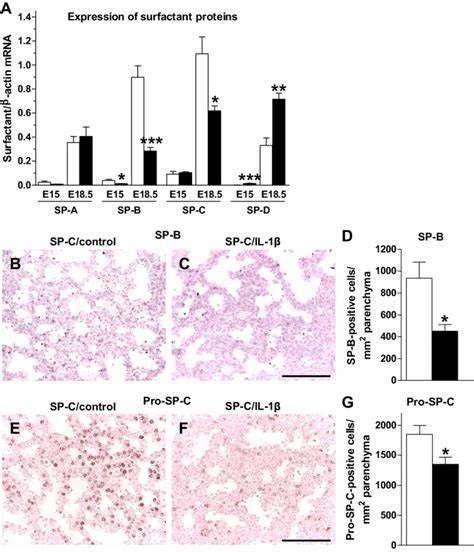A nurse in the antepartum unit is caring for a client who is at 36 weeks of gestation and has gestational hypertension. Suddenly, the client reports continuous abdominal pain and vaginal bleeding. The nurse should suspect which of the following complications?
Placenta previa
Incompetent cervix
Prolapsed cord
Abruptio placentae
The Correct Answer is D
Choice A) Placenta previa is incorrect because this is not a likely complication for a client who has gestational hypertension and reports continuous abdominal pain and vaginal bleeding. Placenta previa is a condition where the placenta covers part or all of the cervix, preventing normal delivery. It can cause painless, bright red bleeding in the third trimester, especially after intercourse or a pelvic exam. However, it does not cause abdominal pain, as the bleeding is not associated with uterine contractions or separation. Moreover, it is not related to gestational hypertension, which is a condition that causes high blood pressure during pregnancy. Therefore, this response is irrelevant and inaccurate.
Choice B) Incompetent cervix is incorrect because this is not a possible complication for a client who is at 36 weeks of gestation and has gestational hypertension and reports continuous abdominal pain and vaginal bleeding.
Incompetent cervix is a condition where the cervix is weak and unable to hold the pregnancy, leading to premature dilation and delivery. It can cause painless, watery vaginal discharge or spotting in the second trimester, followed by rupture of membranes and labor. However, it does not cause abdominal pain or heavy bleeding, as the cervix does not tear or detach from the uterus. Moreover, it is not related to gestational hypertension, which is a condition that causes high blood pressure during pregnancy. Therefore, this response is irrelevant and inaccurate.
Choice C) Prolapsed cord is incorrect because this is not a common complication for a client who has gestational hypertension and reports continuous abdominal pain and vaginal bleeding. Prolapsed cord is a condition where the umbilical cord slips through the cervix and into the vagina before the baby, compressing the cord and cutting off the blood supply and oxygen to the baby. It can cause variable or prolonged fetal heart rate decelerations, visible or palpable cord in the vagina, or fetal distress. However, it does not cause abdominal pain or bleeding, as the cord does not rupture or bleed. Moreover, it is not related to gestational hypertension, which is a condition that causes high blood pressure during pregnancy. Therefore, this response is irrelevant and inaccurate.
Choice D) Abruptio placentae is correct because this is a probable complication for a client who has gestational hypertension and reports continuous abdominal pain and vaginal bleeding. Abruptio placentae is a condition where the placenta separates from the uterine wall before delivery, causing hemorrhage and hypoxia for the mother and the baby. It can cause severe, constant abdominal pain, dark red bleeding, uterine tenderness or rigidity, fetal distress or demise, or maternal shock or coagulopathy. It can be triggered by gestational hypertension, which is a condition that causes high blood pressure during pregnancy and increases the risk of placental abruption by 25%. Therefore, this response is relevant and accurate.

Nursing Test Bank
Naxlex Comprehensive Predictor Exams
Related Questions
Correct Answer is C
Explanation
Choice A) dilates the bronchioles, decreasing airway resistance: This is not the correct function of surfactant.
Surfactant is a substance that reduces the surface tension of the fluid that lines the alveoli, which are the tiny air sacs in the lungs where gas exchange occurs. Surfactant does not affect the diameter of the bronchioles, which are the small airways that branch from the bronchi. Bronchodilation and bronchoconstriction are regulated by the autonomic nervous system and various mediators, such as histamine, epinephrine, and acetylcholine.
Choice B) provides transportation for oxygen to enter the blood supply: This is not the correct function of surfactant. Surfactant does not transport oxygen or any other gas. Oxygen diffuses from the alveoli into the capillaries, where it binds to hemoglobin in the red blood cells. The red blood cells then transport oxygen to the tissues via the blood circulation. Surfactant does not play a role in this process.
Choice C) keeps the alveoli open during expiration: This is the correct function of surfactant. Surfactant prevents the alveoli from collapsing during expiration by lowering the surface tension of the fluid that lines them. This allows for easier breathing and better gas exchange. Without enough surfactant, the alveoli tend to collapse and stick together, causing atelectasis, which is a condition where some or all of a lung collapses. Atelectasis can lead to hypoxia, respiratory distress, and infection.
Choice D) causes increased permeability of the alveoli: This is not the correct function of surfactant. Surfactant does not increase or decrease the permeability of the alveoli, which is the ability of substances to pass through them.
Permeability of the alveoli depends on several factors, such as pressure gradients, solubility, molecular size, and membrane thickness. Increased permeability of the alveoli can occur in conditions such as acute respiratory distress syndrome (ARDS), where fluid leaks into the alveolar space and impairs gas exchange. Surfactant does not cause this condition, but it can be affected by it.

Correct Answer is B
Explanation
Choice a) 100 to 120 is incorrect because this is too low for a normal newborn's heart rate. The heart rate of a newborn is influenced by factors such as gestational age, activity level, temperature, and health status. A full-term, quiet, alert newborn should have a heart rate between 120 and 160 beats per minute, which reflects their high metabolic rate and oxygen demand. A heart rate below 100 beats per minute may indicate bradycardia, which can be caused by hypoxia, hypothermia, or cardiac problems.
Choice b) 120 to 160 is correct because this is the normal range for a full-term, quiet, alert newborn's heart rate. The apical pulse is the best way to measure the heart rate of a newborn, as it reflects the actual contractions of the heart. The apical pulse can be auscultated at the fourth intercostal space on the left side of the chest, just below the nipple line. The nurse should count the apical pulse for a full minute, as it may vary with the respiratory cycle.
Choice c) 80 to 100 is incorrect because this is also too low for a normal newborn's heart rate. A full-term, quiet, alert newborn should have a heart rate between 120 and 160 beats per minute, which is higher than that of an adult or an older child. A heart rate below 100 beats per minute may indicate bradycardia, which can be caused by hypoxia, hypothermia, or cardiac problems.
Choice d) 150 to 180 is incorrect because this is too high for a normal newborn's heart rate. A full-term, quiet, alert newborn should have a heart rate between 120 and 160 beats per minute, which is lower than that of a preterm or a crying newborn. A heart rate above 160 beats per minute may indicate tachycardia, which can be caused by fever, infection, anemia, or hyperthyroidism.

Whether you are a student looking to ace your exams or a practicing nurse seeking to enhance your expertise , our nursing education contents will empower you with the confidence and competence to make a difference in the lives of patients and become a respected leader in the healthcare field.
Visit Naxlex, invest in your future and unlock endless possibilities with our unparalleled nursing education contents today
Report Wrong Answer on the Current Question
Do you disagree with the answer? If yes, what is your expected answer? Explain.
Kindly be descriptive with the issue you are facing.
